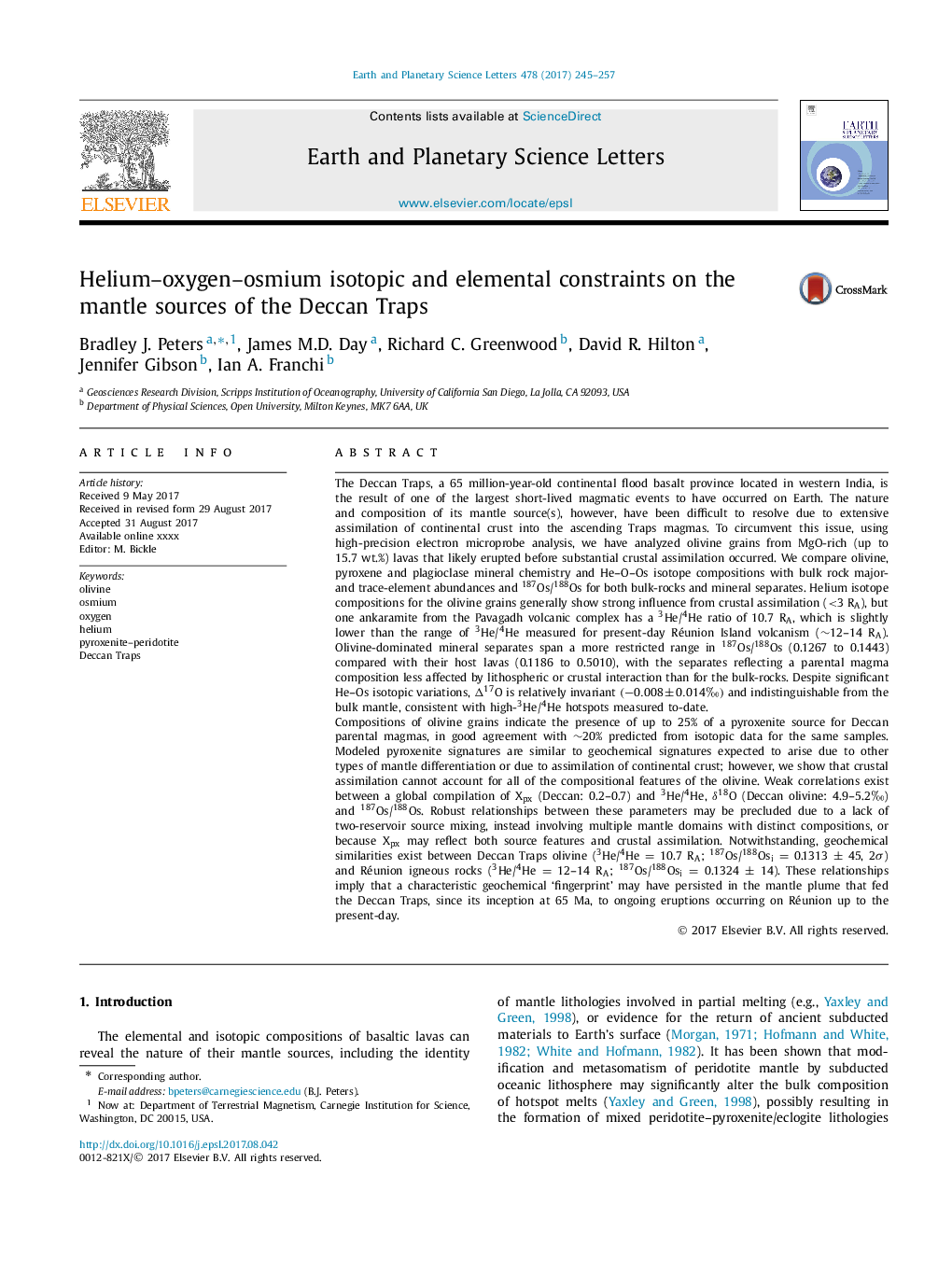| Article ID | Journal | Published Year | Pages | File Type |
|---|---|---|---|---|
| 5779573 | Earth and Planetary Science Letters | 2017 | 13 Pages |
Abstract
Compositions of olivine grains indicate the presence of up to 25% of a pyroxenite source for Deccan parental magmas, in good agreement with â¼20% predicted from isotopic data for the same samples. Modeled pyroxenite signatures are similar to geochemical signatures expected to arise due to other types of mantle differentiation or due to assimilation of continental crust; however, we show that crustal assimilation cannot account for all of the compositional features of the olivine. Weak correlations exist between a global compilation of Xpx (Deccan: 0.2-0.7) and 3He/4He, δ18O (Deccan olivine: 4.9-5.2â°) and 187Os/188Os. Robust relationships between these parameters may be precluded due to a lack of two-reservoir source mixing, instead involving multiple mantle domains with distinct compositions, or because Xpx may reflect both source features and crustal assimilation. Notwithstanding, geochemical similarities exist between Deccan Traps olivine (3He/4He = 10.7 RA; 187Os/188Osi = 0.1313 ± 45, 2Ï) and Réunion igneous rocks (3He/4He = 12-14 RA; 187Os/188Osi = 0.1324 ± 14). These relationships imply that a characteristic geochemical 'fingerprint' may have persisted in the mantle plume that fed the Deccan Traps, since its inception at 65 Ma, to ongoing eruptions occurring on Réunion up to the present-day.
Related Topics
Physical Sciences and Engineering
Earth and Planetary Sciences
Earth and Planetary Sciences (General)
Authors
Bradley J. Peters, James M.D. Day, Richard C. Greenwood, David R. Hilton, Jennifer Gibson, Ian A. Franchi,
